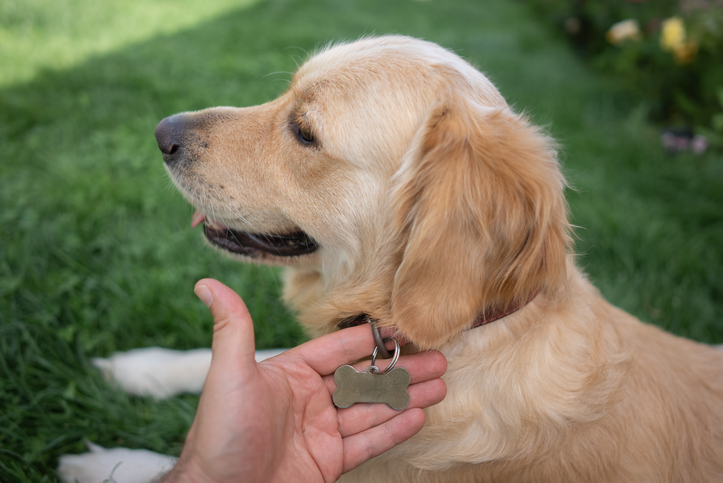I found a lost dog! What should I do? Here are some tips to help your new furry friend find its home.
ACTION
Use caution when approaching
A lost dog may be fearful, stressed, anxious, hungry, sick or injured. Do not assume that this pet is friendly or wants to be touched. You won’t know if the dog is Rabies vaccinated and you do not want to risk a bite injury. Move slowly and quietly. Do not chase the dog if he or she runs away. Never put yourself in harm’s way or in an unsafe situation to get the pet.
Look for identification tags or collars
If the pet will let you, check for any identification tags that may be attached to a collar. There may be an owner’s name and phone number. If a Rabies tag is present, it might have the name of an animal hospital or shelter that you can contact.
Take pictures
Take pictures using your phone to post on social media or show neighbors. Make note of special markings or identification tags and where the pet is currently.
Contact neighbors and those in close proximity to where you found the dog
Go door to door, text or email pictures. Describe the location of where the dog was found or seen.
Bring the pet to a local animal shelter
Local animal shelters are the first place pet parents usually check when a pet goes missing. Shelters often take in stray or lost animals and care for them until the owner is located or a new home can be found. They usually have the ability to check for microchips as well. Use a leash if possible, or a rope. Small dogs can be transported in a carrier.
Call your local animal control
If you can not approach the dog safely, it runs away from you, or you are unable to transport it, call animal control. They have appropriate training and equipment to handle stray or lost pets and will bring them to the shelter for care. Provide a description of the pet and the exact address of where it is or was last seen.
Check with local animal hospitals
Some animal clinics may recognize a lost pet as a patient and can contact the owner. They can also scan for a microchip if they can’t identify the missing dog.
Post on social media and missing pet databases (listed below)
Post info of the missing pet on every social media and local neighborhood app you have. Where he or she was last seen, a recent picture, and any ID tags or unique physical features.
Hang posters and fliers
Print poster sized pictures and fliers of the missing dog and pertinent information. Hang in highly trafficked areas of your town. Use brightly colored, large signs to draw attention.
Check local marketplace websites
Check Craigslist and Facebook marketplace. Heartbroken pet parents may be looking for their missing pets on these forums.
Provide appropriate care if temporarily keeping the pet
If you decide to hold on to the pet while the owner is located, provide fresh water, food, and shelter. Keep separated from other animals in the home to reduce stress and disease transmission.
LINKS TO HELP
Petfinder: https://www.petfinder.com
PETCO Love Lost: https://lost.petcolove.org
Pet FBI: https://petfbi.org
Lost My Doggie: https://lostmydoggie.com
Paw Boost: https://www.pawboost.com
Find Toto: https://www.findtoto.com
Lost Dogs of America: https://lostdogsofamerica.org
Written By: Dr. Jessie Herman
Dr. Herman grew up in many places as a child of a Marine. She started her veterinary career at 14 years of age working at various farms and animals hospitals. After graduating from Auburn University College of Veterinary medicine in 2010, she worked as a general practitioner in multiple locations in the southeast US. Her professional interests include soft tissue surgery, geriatric medicine, and pain management. She also has a passion for rehabilitation which lead her to start a cold laser therapy program in 2 different hospitals. She currently resides in northern Kentucky with her husband (also a vet), children, cats, dogs, chickens, and cattle.






